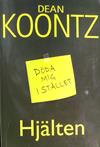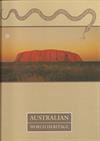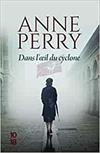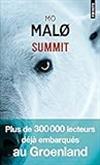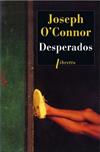
The Poisoner's Handbook: Murder and the Birth of Forensic Medicine in Jazz Age New York
4 journalers for this copy...
I'm fond of murder tales and of forensic-science books, so it's surprising I hadn't picked up a copy of this one yet - but today I came across it in Barnes and Noble and succumbed to temptation! (In good time, too, as there's an American Experience episode based on the book airing soon.)
The book covers the careers of Charles Norris, first chief medical examiner of New York City, and Alexander Gettler, a toxicologist, as they helped bring up-to-date scientific method into crime-solving. The book includes aspects of their careers and personal lives, intermingled with the history of crime in New York during that time, from sensational cases such as that of Ruth Snyder to ground-breaking environmental-hazard cases such as the heartbreaking fates of the "Radium Girls" - young women who worked applying radium-loaded paint onto watch dials, and who fell victim to devastating radium poisoning. The book is grouped into chapters themed on different poisons, though there is a lot of crossover as the fallout from the crimes in previous chapters sometimes pop up again in later ones, whether the poisons match the theme or not. The emphasis switches between the detailed lab analyses - many of which required Gettler to develop his own tests, an often-painstaking and time-consuming challenge - and the cases themselves, as well as the social and political context: Prohibition, for example, resulted in a plague of blindness and death caused by bootleg liquor based on poisonous wood alcohol, some of which had actually been made still more toxic by the government in the (rather naive) belief that that would prevent people from drinking it.
Many of the anecdotes about Gettler reminded me of the TV series "Quincy M.D.," including the bit about his use of horribly-decayed brain matter as a "squeamishness" test for new lab assistants. Apparently he was also very fond of betting on horse races, and seems to have been a jollier soul in his private life than his staid, professorial persona on the witness stand!
Some of the deaths investigated here turned out to be murder, while others proved to be accidental - and it's rather chilling to read the accounts of how easily people could gain access to hideously destructive substances back then. Even more chilling: Norris was called in regarding symptoms that he felt were caused by tetra ethyl lead in gasoline, with evidence from Gettler's lab experiments showing how easily it could be absorbed. While history eventually proved how dangerous it was, at the time the product was only banned for a year or so, with production resuming for decades...
Fascinating look at the rise of forensic toxicology!
The book covers the careers of Charles Norris, first chief medical examiner of New York City, and Alexander Gettler, a toxicologist, as they helped bring up-to-date scientific method into crime-solving. The book includes aspects of their careers and personal lives, intermingled with the history of crime in New York during that time, from sensational cases such as that of Ruth Snyder to ground-breaking environmental-hazard cases such as the heartbreaking fates of the "Radium Girls" - young women who worked applying radium-loaded paint onto watch dials, and who fell victim to devastating radium poisoning. The book is grouped into chapters themed on different poisons, though there is a lot of crossover as the fallout from the crimes in previous chapters sometimes pop up again in later ones, whether the poisons match the theme or not. The emphasis switches between the detailed lab analyses - many of which required Gettler to develop his own tests, an often-painstaking and time-consuming challenge - and the cases themselves, as well as the social and political context: Prohibition, for example, resulted in a plague of blindness and death caused by bootleg liquor based on poisonous wood alcohol, some of which had actually been made still more toxic by the government in the (rather naive) belief that that would prevent people from drinking it.
Many of the anecdotes about Gettler reminded me of the TV series "Quincy M.D.," including the bit about his use of horribly-decayed brain matter as a "squeamishness" test for new lab assistants. Apparently he was also very fond of betting on horse races, and seems to have been a jollier soul in his private life than his staid, professorial persona on the witness stand!
Some of the deaths investigated here turned out to be murder, while others proved to be accidental - and it's rather chilling to read the accounts of how easily people could gain access to hideously destructive substances back then. Even more chilling: Norris was called in regarding symptoms that he felt were caused by tetra ethyl lead in gasoline, with evidence from Gettler's lab experiments showing how easily it could be absorbed. While history eventually proved how dangerous it was, at the time the product was only banned for a year or so, with production resuming for decades...
Fascinating look at the rise of forensic toxicology!
I'm putting this book in the Biographies of Things bookbox; see the bookbox journal for the full list of my choices and contributions. Hope someone enjoys this!
Pulled out of the Biography of Things bookbox.
Poisons, in New York City, in the years around and during Prohibition. Sounds too niche to fill a whole book, but it's not. The story revolves around Charles Norris, the city's first scientifically trained medical examiner. (Previously, it had been a cushy and rather corrupt political position.) The book is separated into chapters on specific poisons, and the stories are often tragic, occasionally a little bit funny, and always fascinating. Great for a lover of chemistry and forensic medicine.
I'm passing the bookbox back to 6of8 next month, so I'll put this book back in there and see if she wants to send it for another go-round.
I'm passing the bookbox back to 6of8 next month, so I'll put this book back in there and see if she wants to send it for another go-round.
Passing the Biography of Things bookbox back to 6of8 today.
I swore that I would not be taking any books out of the book box because they shoukd travel and because I have no shortage of things on Mt TBR. But . . .
Almost unputdownable, which is hard to achieve in nonfiction of this type. The science was good enough to make me think, but not so complex that I couldn't follow it. The different poisonous substances studied were interesting to a mystery and true-crime enthusiast such as I. And the history was really fascinating. I learned so much about how the crime detection apparati we take for granted today were started in this country (like the medical examiner's office and the concept that they should examine potential crime victims at all, let alone at the scene of the crime before the body is claimed by someone else, the pattern of an autopsy, etc.) And it was all organized quite well by subject/poison but still in chronological order.
For me the most compelling story in the book is that of Prohibition. I knew that it gave rise to the powerful organized crime syndicates and that it was the forerunner in many ways of the war on drugs in the inspiration of criminal enterprises and smuggling. What I didn't know was that alcoholism in this country increased, in some cases nearly double what it was before prohibition, because of the lure of the forbidden combined with the fact that beer and wine for an occasional social drink were completely out of the question -- hard alcohol was all you could get. And since the hard alcohol available to the common man was that made by bootleggers from wood alcohol being more or less refined, hard alcohol was risky and could be deadly in and of itself. So, of course, the federal government over the years of prohibition required manufacturers to add more and more toxic and lethal substances as additives to the wood alcohol, including formaldehyde and benzene. The promoters of Prohibition were told repeatedly that it was killing people to do so and the response was that if people chose to break the law and drink anyway, they deserved what they got. That concept is as chilling as the actions of organized crime in that period of time.
A secondary story and one that I would love to see as the subject of its own work is that of the FDA, which originally could literally do nothing at all in the way of enforcement. When they warned that people shouldn't drink the era's version of Red Bull-type energy drinks which contained high concentrations of radium (yes, *that* radium), even FDR criticized that stance and no enforcement was possible. It took a cough syrup manufacturer using antifreeze as the basis of their formula, which doctors prescribed to young patients, and the deaths of more than 100 children (to which the manufacturer stated the product was perfectly legal and therefore they had no need to apologize) before Congress gave the agency any enforcement powers.
All in all, a great read.
For me the most compelling story in the book is that of Prohibition. I knew that it gave rise to the powerful organized crime syndicates and that it was the forerunner in many ways of the war on drugs in the inspiration of criminal enterprises and smuggling. What I didn't know was that alcoholism in this country increased, in some cases nearly double what it was before prohibition, because of the lure of the forbidden combined with the fact that beer and wine for an occasional social drink were completely out of the question -- hard alcohol was all you could get. And since the hard alcohol available to the common man was that made by bootleggers from wood alcohol being more or less refined, hard alcohol was risky and could be deadly in and of itself. So, of course, the federal government over the years of prohibition required manufacturers to add more and more toxic and lethal substances as additives to the wood alcohol, including formaldehyde and benzene. The promoters of Prohibition were told repeatedly that it was killing people to do so and the response was that if people chose to break the law and drink anyway, they deserved what they got. That concept is as chilling as the actions of organized crime in that period of time.
A secondary story and one that I would love to see as the subject of its own work is that of the FDA, which originally could literally do nothing at all in the way of enforcement. When they warned that people shouldn't drink the era's version of Red Bull-type energy drinks which contained high concentrations of radium (yes, *that* radium), even FDR criticized that stance and no enforcement was possible. It took a cough syrup manufacturer using antifreeze as the basis of their formula, which doctors prescribed to young patients, and the deaths of more than 100 children (to which the manufacturer stated the product was perfectly legal and therefore they had no need to apologize) before Congress gave the agency any enforcement powers.
All in all, a great read.
Journal Entry 8 by  6of8
6of8 at -- Mail or by hand-rings, RABCK, meetings, Maryland USA on Tuesday, December 22, 2015
at -- Mail or by hand-rings, RABCK, meetings, Maryland USA on Tuesday, December 22, 2015
 6of8
6of8 at -- Mail or by hand-rings, RABCK, meetings, Maryland USA on Tuesday, December 22, 2015
at -- Mail or by hand-rings, RABCK, meetings, Maryland USA on Tuesday, December 22, 2015
Released 8 yrs ago (12/22/2015 UTC) at -- Mail or by hand-rings, RABCK, meetings, Maryland USA
CONTROLLED RELEASE NOTES:
When I posted my "review" of this book on Goodreads, Stinalynn marked it as one she wanted to read. I have sent the book to her.
Any future reader or recipient of this book is encouraged to leave a journal entry here on the BookCrossing site to let prior readers know the fate of the book. You can make an anonymous entry without joining the BookCrossing movement, but if you are interested in joining, it is a free and spam-free community where your contact information is not shared with others. Best of all, members receive private messages via e-mail from books like this one when those books are journaled, allowing for long-term relationships between books and readers.
Any future reader or recipient of this book is encouraged to leave a journal entry here on the BookCrossing site to let prior readers know the fate of the book. You can make an anonymous entry without joining the BookCrossing movement, but if you are interested in joining, it is a free and spam-free community where your contact information is not shared with others. Best of all, members receive private messages via e-mail from books like this one when those books are journaled, allowing for long-term relationships between books and readers.
Thank you so much for sending this to me! It looks both useful and fun. :-)




